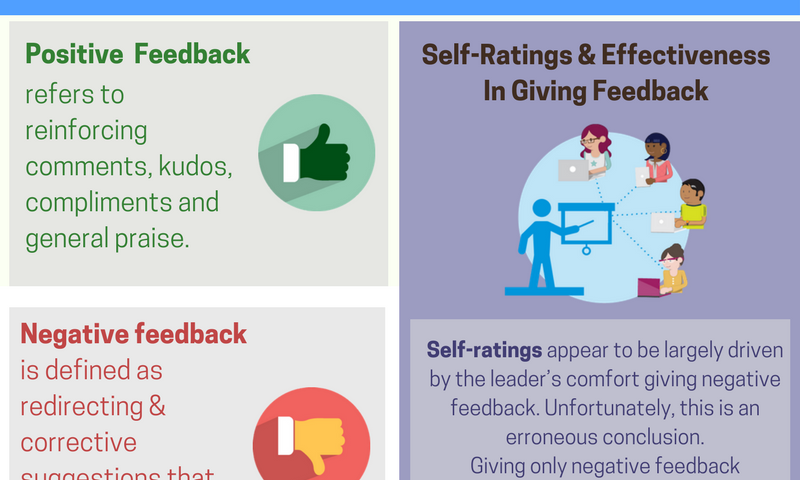The Vital Role Of Positive Feedback As A Leadership Strength

The Urgency of Developing More Women Leaders! – How to Leverage Their Unique Strengths

The Vital Role Of Positive Feedback As A Leadership Strength

The Vital Role Of Positive Feedback As A Leadership Strength
Self-Ratings And Effectiveness In Giving Feedback
We also asked each participant to rate themselves on their effectiveness at giving others honest feedback. The chart below shows the percentage that agreed with the statement “I would rate myself as highly effective at providing others with honest, straightforward feedback.” We created the bars by using the two scales, “gives positive and gives negative feedback,” and indicating the “tendency to avoid or give such feedback.” It’s clear from the percentages that those who indicated a preference for giving negative feedback felt they were effective at giving others honest, straightforward feedback. Self-ratings appear to be largely driven by the leader’s comfort giving negative feedback. Unfortunately, this is an erroneous conclusion. Giving only negative feedback diminishes a leader’s effectiveness in the eyes of others and does not have the effect they believe it has.
The Recipients Point Of View
How would those who work for and with these people experience their practice of giving positive or negative feedback? We compared 328 managers’ 360 degree feedback assessments with results from their self-assessment instrument that measured their preference for giving positive or negative feedback. In the 360 assessment, an average of 13 respondents were asked to evaluate their leader’s behavior “Gives honest feedback in a helpful way.”
This analysis provided us with some surprising and counter-intuitive data. The recipients gave high scores to leaders who freely gave positive reinforcement. Giving or not giving corrective feedback did not make a big difference unless the leader avoided giving positive feedback.
Similarly, the direct reports’ reactions to the managers who gave positive reinforcement was not highly affected by whether or not the leader accompanied the positive reinforcement with negative or corrective feedback. The key was the manager’s desire to give positive feedback. (Note that this is entirely contrary to what the leader believes.)
Effectiveness In Developing Subordinates
After examining these results, we looked at the broader competency of “Developing Others.” In these results, we found the same trend (see the graph below). We then looked at a rating of overall leadership effectiveness. Again, we found a very similar trend.
Effectiveness in developing others hinges squarely on the leader’s comfort and willingness to provide positive feedback to the subordinates. Giving corrective or negative feedback (or not) makes little difference if there is a clear presence of positive feedback from the leader.
Read the whole article or
Download the Infographic



